**  USA Customers: Enjoy up to $800 Tax Free Imports - Even with Tariffs, we're still better value than US stores! **
USA Customers: Enjoy up to $800 Tax Free Imports - Even with Tariffs, we're still better value than US stores! **
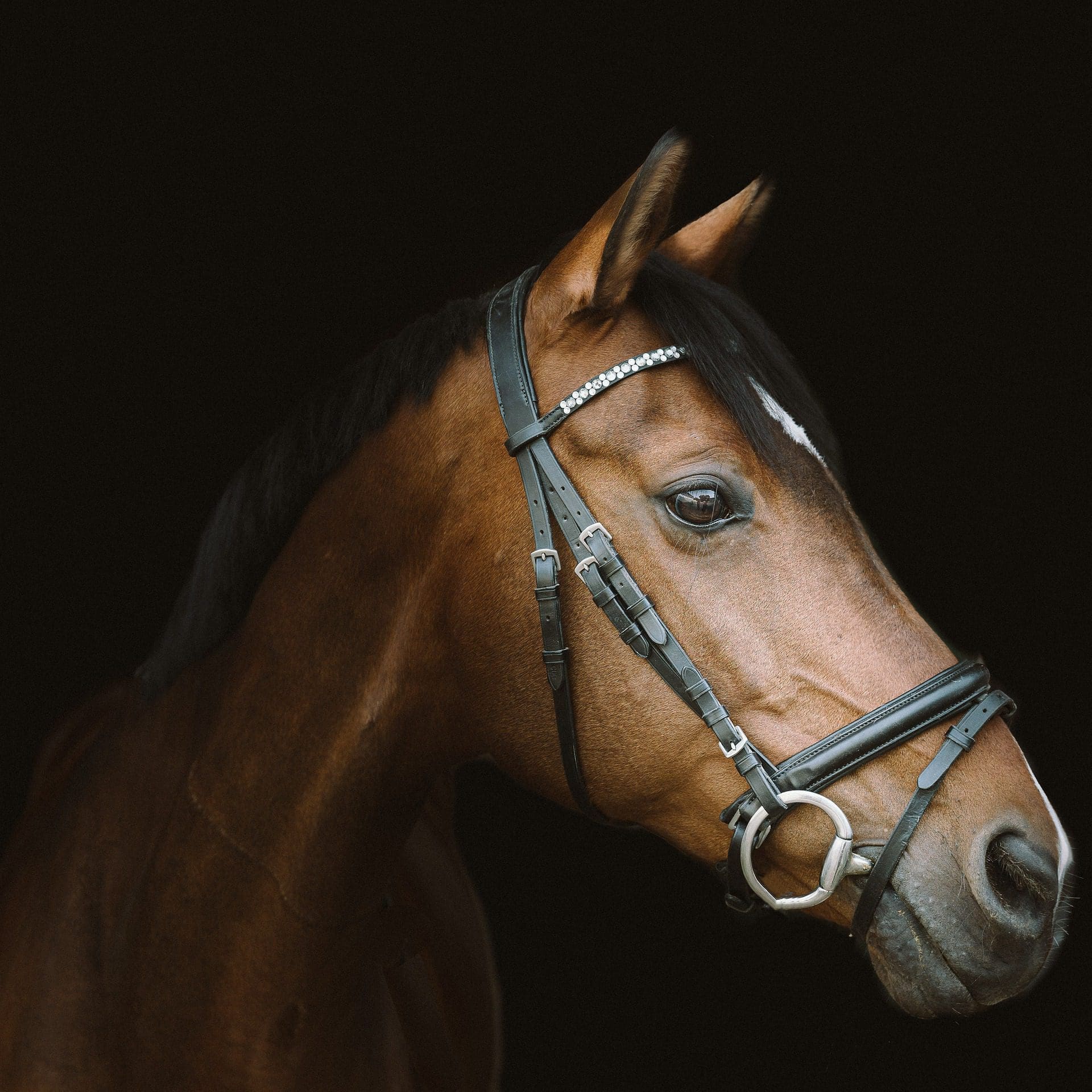
Updated:25/03/2024
In the world of equestrianism, ensuring the perfect fit for your horse’s bridle is paramount. A well-fitted bridle not only enhances comfort and performance but also promotes communication and partnership between horse and rider. In this article, we’ll walk you through the process of accurately measuring each component of a bridle. By ensuring precise measurements for each part, you’ll be able to assemble a perfectly fitting bridle with confidence.
Before we delve into the measurement process, it’s crucial to understand that bridles typically come in three sizes: Pony, Cob, and Full, with some retailers offering additional options like Small Pony and Extra-Full. However, there’s no universal standard for these sizes, and measurements can vary between brands and countries. For instance, European bridles tend to run larger than English ones, so while your current bridle may fit your horse, it’s not a guarantee that a new one will fit the same.
Mass-produced bridles often adopt a one-size-fits-all approach, assuming uniform conformation across horse breeds, which is often not the case. This can lead to issues if you can’t mix and match bridle parts. For instance, a horse with a short face may need a cob-size bridle, but if their forehead is wide, they may require a full-size browband. Unfortunately, mass-produced bridles can’t accommodate such variations.
At Pink Equine, our custom-made bridles allow us to mix and match parts to suit your needs. With a variety of bridle types available, we can accommodate most requests. Our detailed sizing guides make it easy to select the right size once you have your measurements. Let’s explore the steps on how to measure for a bridle.
After reviewing several measuring guides, we’ve noticed that many unnecessarily complicate the process of measuring for a bridle. Our aim with this guide is to simplify the steps while ensuring you find the correct size bridle. We’ve outlined two straightforward methods, each consisting of just three simple steps.
If you already have a bridle that fits your horse, take it apart (see our guides on the different parts of a bridle and how to put a bridle together).
Step 1.Take the headpiece with the cheek pieces attached and measure from one side to the other (marked A – B on the image below) with a soft tape measure. This is what we call our bit-to-bit measurement.
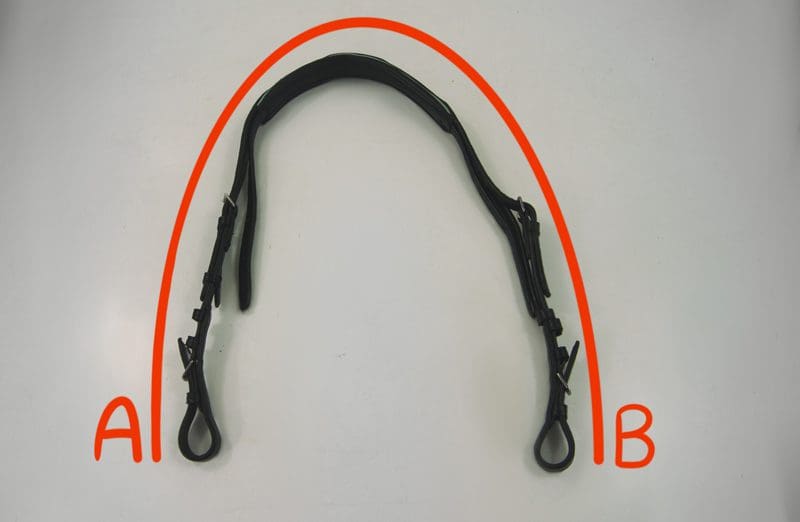
Step 2. Remove the browband and measure the inside from end to end (marked C – D on the image below).
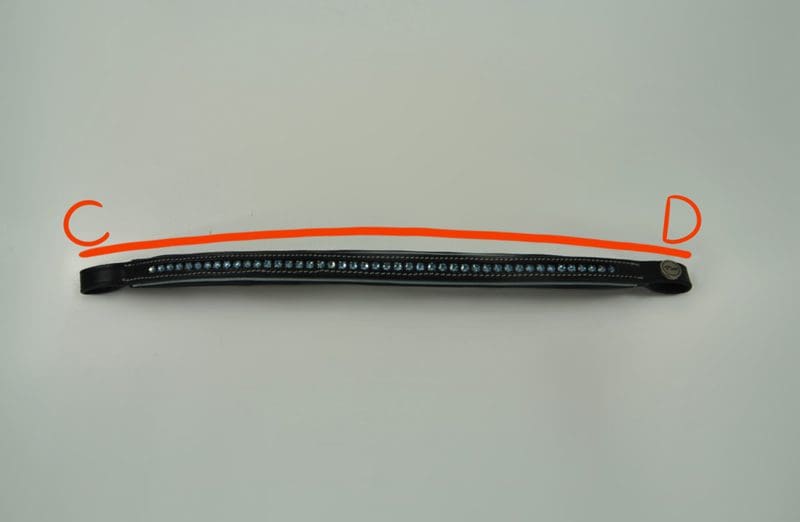
Step 3. Lay out the noseband and measure this from end to end.
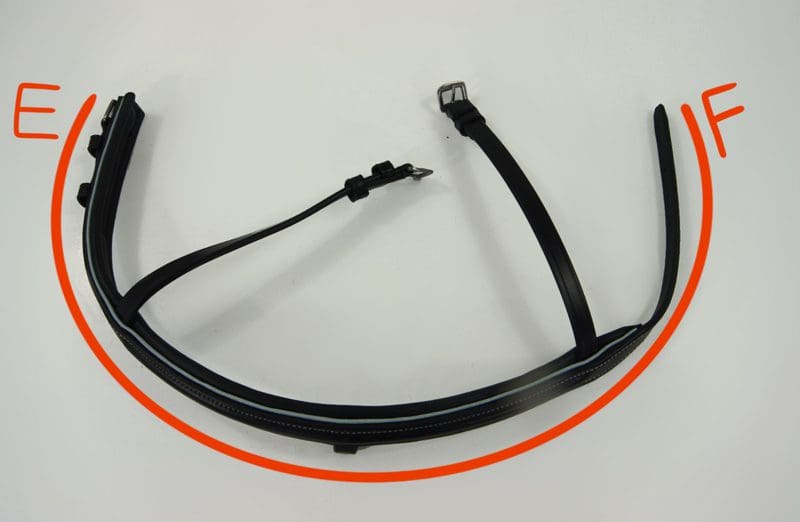
Refer to our horse bridle size chart.
You will notice that we provide the smallest and largest measurements taking into account which hole the bridle is put together on. Ideally, your measurements should fall in the middle of one of our sizes. Measurements can be taken in centimeters or inches. If your existing bridle is too tight, remember to take into account any size increases for the new bridle.
If you don’t have an existing bridle and are unable to borrow one, you can physically measure your horse for a bridle using a sewing tape measure. There are three simple steps that you need to take.
Step 1. The Headpiece Measurement.
To find the length of the headpiece including cheekpieces, using a sewing tape measure, measure from the corner of the horse’s mouth, where the bit will sit (Marked A on the images) over the poll, around the horse’s ears, down to the other side of the horse’s mouth (Marked B on the images).
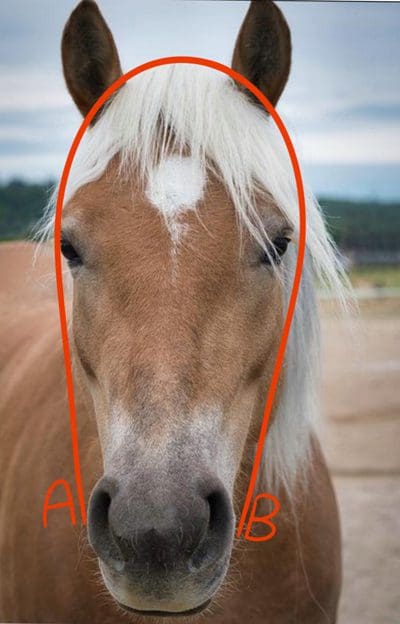
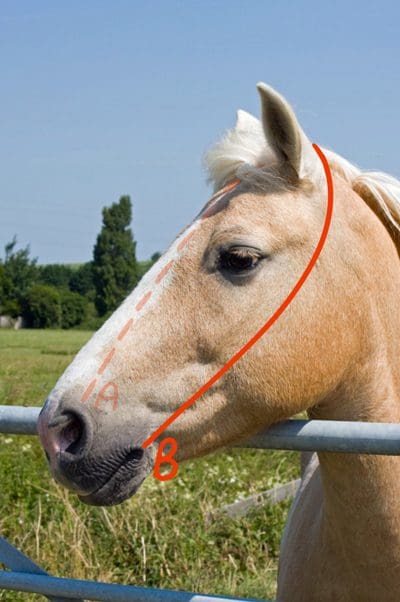
Step 2. The Browband Measurement.
To find the length of the browband measure across the forehead (Marked C – D on the images). Make sure the measurement is loose enough to fit two fingers under the tape. Ensure that the tape measure is far enough back so as not to pull the headpiece forward and thereby pinching the horse’s ears.
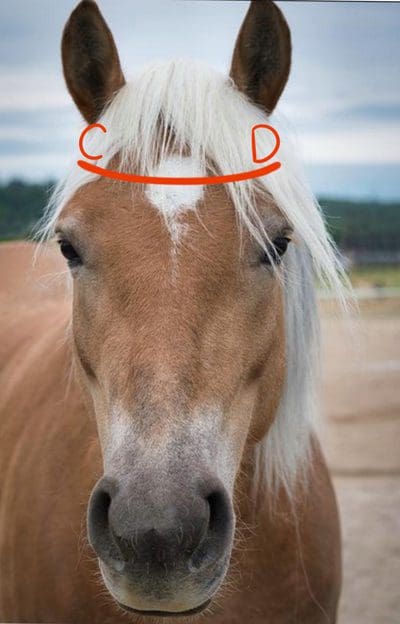
Step 3. The Noseband Measurement.
To find the length of the noseband, start a couple of fingers width (about an inch) below the cheekbones, and measure the total circumference of the muzzle (Marked E – F on the image). Make sure the measuring tape is loose enough that you can fit two fingers under the tape.
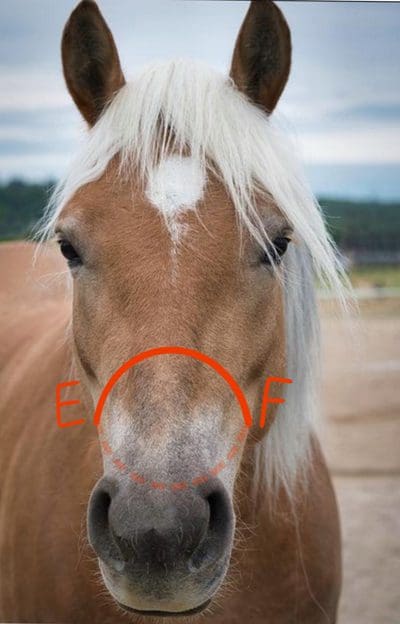
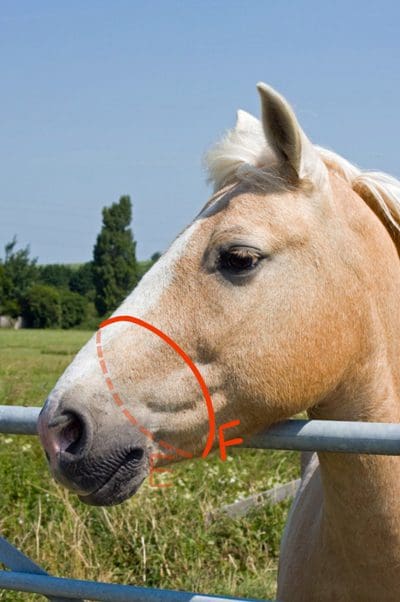
If you don’t have a bridle for your horse, consider borrowing one to test the size. For assistance with fitting, refer to our guides on how to put a bridle on a horse and how to fit a bridle. If the borrowed bridle fits your horse well, follow the same process outlined in Method 1 above. Should any part of the bridle feel tight, make a note to adjust the measurements accordingly.
Finally, if all else fails and you have no other option, you can use the size of your horse’s headcollar as a guide. It is not anywhere near as precise as the other methods outlined in this guide, but for example if your horse is in a full-size headcollar you can start with a full-size bridle and work from there.
Pink Equine has a wide range of custom horses bridles, available in Black, Brown, or Tan leather at competitive prices. If you need a non-standard size, a mix, and match bridle, or have a special request, please do not hesitate to contact us either by phone at 01386 833050, using the contact form, or via Facebook messaging.
Whilst you are visiting, we hope that you will take time to have a look at some of the beautiful horse bridles we have available. As well as our custom ranges of horse tack, we enjoy writing articles such as this one, that we hope visitors will find interesting and useful.
You can visit our blog to find many more helpful guides and articles, but why not join our Pink Equine club. Membership allows us to notify you of future articles and guides, as well as regular member discounts and special offers, competitions and early notification of new products. Its free to join and we promise not to cram your inbox with thousands of emails! Click here to join today.